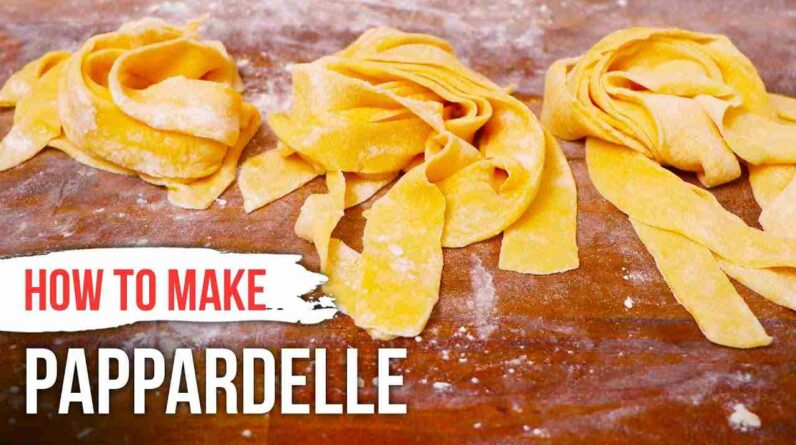In our quest for the perfect Italian tomato sauce, we have tirelessly experimented with various techniques and ingredients to uncover the ultimate recipe. Through countless trials and tastings, we have discovered the secrets to creating a mouthwatering, flavorful sauce that will transport you straight to the rustic kitchens of Italy. Join us as we unveil the tried-and-true method for making an authentic, richly seasoned tomato sauce from scratch. Get ready to elevate your pasta dishes to new heights of deliciousness.

Choosing the Right Tomatoes
Canned Tomatoes vs. Fresh Tomatoes
When it comes to choosing the right tomatoes for your Italian tomato sauce, you have two main options: canned tomatoes or fresh tomatoes. Both options have their advantages and it ultimately depends on personal preference and the time you have available.
Canned tomatoes are a popular choice for many home cooks because they are convenient and available year-round. They are picked at the peak of ripeness and canned immediately, which helps to lock in the flavors. Canned tomatoes are also typically peeled and seeded, making them easier to work with in sauces.
On the other hand, some people prefer to use fresh tomatoes for their sauce. Fresh tomatoes can provide a bright and vibrant flavor that cannot be replicated with canned tomatoes. However, using fresh tomatoes requires a bit more work as they need to be blanched, peeled, and seeded before using in the sauce.
San Marzano Tomatoes vs. Other Varieties
When it comes to canned tomatoes, one variety that stands out is the San Marzano tomato. San Marzano tomatoes are known for their exceptional flavor and low acidity, making them a popular choice for Italian tomato sauces. They have a unique sweetness and meatiness that adds depth to the sauce.
However, it’s important to note that San Marzano tomatoes can be quite expensive and may not be easily accessible for everyone. If you can’t find San Marzano tomatoes or simply prefer to use a different variety, there are plenty of other options available. Plum tomatoes, for example, are another great choice for making tomato sauces.
Ultimately, the choice between San Marzano tomatoes and other varieties comes down to personal preference and budget. Both options can result in a flavorful and delicious sauce.
Using Tomato Varieties in Combination
While using just one type of tomato can certainly create a delicious sauce, combining different tomato varieties can take your sauce to the next level. By blending different tomato flavors, you can create a more complex and layered sauce that will have your taste buds singing.
Consider combining different tomato varieties such as San Marzano, plum, cherry, and heirloom tomatoes. Each variety brings its own unique characteristics to the sauce, whether it’s the sweetness of cherry tomatoes or the rich, meaty flavor of plum tomatoes.
Experimenting with different tomato combinations allows you to tailor the sauce to your own taste preferences. You can mix and match different flavors until you find the perfect combination that suits your palate.
Preparing the Ingredients
Onions and Garlic: Essential Aromatics
One of the keys to a flavorful tomato sauce is starting with a good flavor base, and that begins with onions and garlic. These aromatic ingredients add depth and complexity to the sauce, enhancing the overall flavor profile.
Start by finely chopping or mincing a couple of onions and several cloves of garlic. Sauté them in some olive oil until they become translucent and fragrant. This process helps to release the natural sugars and flavors in the onions and garlic, infusing them into the sauce.
Herbs and Spices: Finding the Perfect Balance
Herbs and spices are another essential component of a flavorful Italian tomato sauce. They provide a depth of flavor and can help to balance out the sweetness and acidity of the tomatoes.
Some classic herbs and spices to consider include basil, oregano, thyme, and bay leaves. Fresh herbs are always a great option, but dried herbs can also work well and are more readily available year-round.
When adding herbs and spices, it’s important to find the right balance. Start with a small amount and gradually add more as needed, tasting along the way. Remember, you can always add more, but it’s difficult to remove too much once it’s been added.
Meat or No Meat: Adding Depth of Flavor
Adding meat to your tomato sauce can help to create a rich and flavorful base. Ground beef, Italian sausage, or even pancetta are all great options for adding depth to your sauce.
The key is to brown the meat well before adding the other ingredients. This step allows the meat to develop a deep, savory flavor that will infuse into the sauce. Once the meat is nicely browned, you can continue adding the onions, garlic, and other ingredients.
If you prefer a vegetarian or vegan option, you can skip the meat altogether and still create a delicious sauce. Simply focus on building flavors with the onions, garlic, herbs, and spices, and you’ll have a flavorful sauce without the meat.

Sautéing and Building Flavor
Creating a Flavor Base with Onions and Garlic
Sautéing the onions and garlic is the first step in building the flavor profile of your tomato sauce. Heat some olive oil in a large pot or saucepan over medium heat, then add the finely chopped onions and minced garlic.
Cook the onions and garlic until they become soft and translucent, which usually takes about 5-7 minutes. This helps to release their natural sweetness and flavors, providing a solid foundation for the sauce.
Enhancing the Aromatics with Herbs and Spices
Once the onions and garlic are cooked, it’s time to add the herbs and spices. This is where you can get creative and tailor the sauce to your own taste preferences.
Start by adding dried herbs like basil, oregano, and thyme. These herbs provide a classic Italian flavor and pair well with tomatoes. If you prefer a bit of heat, you can also add a pinch of red pepper flakes at this stage.
Give the herbs and spices a quick stir to coat the onions and garlic. The heat will help to release their aromatic compounds and infuse them into the sauce. Be careful not to burn the herbs, as this can result in a bitter taste.
Building Layers of Flavor with Meat
If you’re adding meat to your sauce, this is the time to brown it before adding the other ingredients. Heat some olive oil in a separate pan over medium heat and add the meat. Break it up with a wooden spoon and cook until it is nicely browned.
Browning the meat creates a depth of flavor that will enhance the overall taste of the sauce. Once the meat is browned, you can add it to the pot with the onions, garlic, and spices. Stir well to combine all the ingredients and continue building the flavors.
Simmering the Sauce
Achieving the Perfect Consistency
Once all the ingredients are in the pot, it’s time to let the sauce simmer. Simmering allows the flavors to meld together and develop over time. It also helps to reduce the sauce and achieve the desired consistency.
To simmer the sauce, reduce the heat to low and cover the pot partially with a lid. This allows some of the steam to escape and prevents the sauce from becoming too watery.
The length of time you simmer the sauce depends on personal preference and the flavors you want to develop. Some people prefer a quick simmer of 30 minutes, while others let it simmer for several hours to intensify the flavors. Remember to stir occasionally to prevent the sauce from sticking to the bottom of the pot.
Balancing the Flavors with Salt and Sugar
As the sauce simmers, it’s important to taste and adjust the seasoning as needed. You’ll likely need to add salt to enhance the flavors and balance out the acidity of the tomatoes.
Start by adding a small amount of salt and tasting the sauce. Continue adding salt gradually until you reach the desired flavor. Remember, it’s easier to add more salt later if needed, but difficult to remove excess salt once it’s been added.
In addition to salt, you can also add a pinch of sugar to balance out the acidity of the tomatoes. This helps to enhance the natural sweetness of the sauce and create a more well-rounded flavor profile.
Adding Depth and Complexity with Red Wine
For those looking to elevate their tomato sauce to the next level, adding red wine can bring more depth and complexity to the flavors. Red wine enhances the natural flavors of the tomatoes and adds a richness that can’t be achieved with other ingredients.
Choose a red wine that you enjoy drinking, as the flavor will be prominent in the sauce. Pour in a moderate amount of red wine and let it simmer with the other ingredients. The alcohol will cook off during the simmering process, leaving behind a deep and flavorful sauce.

Reducing and Thickening the Sauce
Removing Excess Liquid
During the simmering process, it’s not uncommon to have excess liquid in the sauce. This can result in a watery consistency that may not be desirable.
To remove the excess liquid, you can continue simmering the sauce uncovered. This allows the steam to escape and helps to reduce the sauce. Stir occasionally to ensure it doesn’t stick to the bottom of the pot.
If you prefer a thicker consistency and don’t want to wait for the liquid to evaporate naturally, you can use a slotted spoon to remove some of the excess liquid. This helps to concentrate the flavors and thicken the sauce.
Infusing Flavors through Reduction
Reducing the sauce not only helps to thicken it but also intensifies the flavors. As the sauce simmers and reduces, the water content decreases, leaving behind a more concentrated and flavorful sauce.
To maximize the reduction, continue simmering the sauce uncovered over low heat. This allows the moisture to evaporate more quickly, resulting in a thicker sauce. Remember to stir occasionally to prevent it from sticking to the bottom.
Thickening the Sauce with Tomato Paste
If you prefer a thicker and more robust sauce, you can add tomato paste to help thicken it further. Tomato paste is simply concentrated tomato puree, and it adds depth and richness to the sauce.
Add a few tablespoons of tomato paste to the sauce and stir well to combine. The tomato paste will dissolve and blend into the sauce, creating a thick and velvety texture. This also helps to enhance the tomato flavor and create a more robust sauce.
Blending and Straining
Blending for a Smooth Texture
For those who prefer a smooth and creamy texture, blending the sauce is a great option. This helps to break down any larger chunks of tomatoes, onions, or garlic, resulting in a silky smooth sauce.
Transfer the sauce to a blender or use an immersion blender directly in the pot. Blend until you reach the desired consistency, whether that’s completely smooth or slightly chunky. Be careful when blending hot liquids to avoid any accidents.
Blending the sauce not only creates a smooth texture but also helps to distribute the flavors evenly throughout. This can result in a more consistent and balanced taste.
Straining for a Creamier Sauce
If you prefer a creamier sauce without any chunks or seeds, you can strain the sauce after blending. This removes any unwanted solids and creates a smoother and more refined texture.
To strain the sauce, place a fine-mesh sieve or cheesecloth over a bowl or pot. Pour the blended sauce into the sieve and allow it to strain naturally. Use a spatula or the back of a spoon to press the sauce against the sieve, extracting as much liquid as possible.
Straining the sauce provides a velvety smooth texture that is perfect for pasta dishes or as a base for other Italian recipes. It removes any unwanted textures and creates a more refined sauce.

Adding the Finishing Touches
Adjusting Seasoning
Before serving your Italian tomato sauce, it’s important to taste and adjust the seasoning once again. The flavors can evolve throughout the cooking process, so a final adjustment ensures a perfectly balanced sauce.
Taste the sauce and add more salt if needed. You can also add a pinch of sugar or a splash of vinegar to fine-tune the sweetness and acidity levels. Keep in mind that the flavors will continue to meld as the sauce sits, so be mindful not to oversalt.
Adding Fresh Herbs at the End
Fresh herbs can provide a burst of freshness and elevate the flavors of your tomato sauce. Add a handful of chopped fresh herbs, such as basil or parsley, towards the end of cooking. This adds a vibrant and aromatic element to the sauce.
The fresh herbs give the sauce a bright and lively taste, perfect for enhancing the overall flavor profile. They also add a pop of color, making the sauce visually appealing.
Incorporating a Creamy Element
For those who enjoy a creamy tomato sauce, incorporating a creamy element can take it to the next level. This can be achieved by adding a splash of heavy cream, half-and-half, or even a dollop of mascarpone cheese.
When adding the creamy element, do so gradually and stir it into the sauce over low heat. This ensures that it integrates smoothly and evenly, creating a luscious and velvety texture.
Storing and Reheating Sauce
Proper Storage Techniques
If you have leftover sauce or want to make a large batch ahead of time, it’s important to know how to store it properly to maintain its freshness and flavor.
Allow the sauce to cool completely before transferring it to an airtight container. This helps to prevent condensation and maintain the integrity of the sauce. Store it in the refrigerator for up to 5 days.
Freezing the Sauce for Later Use
If you want to store the sauce for an extended period, freezing is a great option. Freezing allows you to have homemade sauce on hand whenever you need it.
To freeze the sauce, transfer it to freezer-safe containers or freezer bags. Make sure to leave some headspace as the sauce will expand during freezing. Label the containers with the date and contents for easy identification.
Frozen tomato sauce can be stored for up to 3-4 months. When you’re ready to use it, simply thaw it in the refrigerator overnight or in a bowl of cold water for a quicker thawing process.
Reheating the Sauce for Optimal Flavor
When reheating your tomato sauce, it’s important to do so gently and slowly to prevent scorching or overcooking. The goal is to reheat the sauce while maintaining its fresh flavors and textures.
To reheat the sauce, transfer it to a saucepan or microwave-safe dish. Heat it over low to medium heat, stirring occasionally until heated through. Avoid rapid boiling or overheating, as this can affect the taste and texture of the sauce.

Alternative Approaches and Variations
Adding a Kick with Red Pepper Flakes
If you prefer a spicier tomato sauce, adding red pepper flakes is a great way to add some heat. Red pepper flakes can be added along with the other herbs and spices to infuse the sauce with a spicy kick.
Start with a small amount of red pepper flakes and gradually increase the heat to your liking. Remember, it’s easier to add more heat than to remove it, so start conservatively and taste along the way.
Creating a Meaty Bolognese Sauce
For those who prefer a meaty tomato sauce, a Bolognese sauce is the perfect option. Bolognese sauce is a rich and hearty meat sauce that pairs well with pasta dishes.
To make a Bolognese sauce, start by browning ground meat (such as beef, pork, or veal) in a separate pan. Drain any excess fat and add it to the sautéed onions, garlic, and other ingredients. Simmer the sauce low and slow to allow the flavors to meld together.
Bolognese sauce can be served with a variety of pasta shapes, such as spaghetti, fettuccine, or rigatoni. It’s a comforting and satisfying option for those looking for a meaty tomato sauce.
Trying Different Herb Combinations
While classic Italian herbs like basil, oregano, and thyme are commonly used in tomato sauce, there’s no rule against trying different herb combinations. Mixing and matching herbs can create unique and interesting flavors.
Consider experimenting with herbs like rosemary, sage, marjoram, or even adding a touch of dried or fresh mint for a refreshing twist. Each herb will bring its own distinct flavor profile and can take your tomato sauce in a whole new direction.
Be adventurous and don’t be afraid to get creative with herb combinations. You never know, you might discover a new favorite flavor combination!
Troubleshooting Tips and Common Mistakes
Sauce Too Watery?
If your tomato sauce turns out too watery, there are a few things you can do to thicken it up. Start by simmering the sauce uncovered for a longer period, allowing the excess liquid to evaporate. Stir occasionally to prevent sticking.
If simmering isn’t enough, you can use a slotted spoon to remove some of the excess liquid. Alternatively, you can mix a small amount of cornstarch or flour with water and add it to the sauce. This will help to thicken it without altering the flavors.
Sauce Too Acidic?
If your tomato sauce is too acidic, there are a few ways to balance out the flavors. Add a pinch of sugar to help neutralize the acidity and bring out the natural sweetness of the tomatoes.
Another option is to add a small amount of dairy, such as a splash of cream or a dollop of butter. The fat in the dairy helps to mellow the acidity and create a smoother and more balanced sauce.
Lacking Depth of Flavor?
If your tomato sauce is lacking depth of flavor, there are a few tricks you can try to enhance the taste. Start by adding salt to bring out the natural flavors of the ingredients. Taste and adjust as needed, being careful not to oversalt.
You can also add a splash of red wine, as mentioned earlier, to help deepen the flavors. Red wine adds complexity and richness, taking your tomato sauce to a whole new level.
Additionally, consider adding a small amount of tomato paste to intensify the tomato flavor. Tomato paste is concentrated and provides a depth that regular tomatoes alone may not achieve.
By troubleshooting these common mistakes, you can take your tomato sauce from good to phenomenal. Don’t be discouraged by minor setbacks; with a little adjustment, you can achieve a sauce that will impress even the most discerning palates.
In conclusion, making a flavorful Italian tomato sauce from scratch requires attention to detail and a balance of ingredients. From choosing the right tomatoes to adding the finishing touches, each step plays a crucial role in developing a sauce that is rich, robust, and bursting with flavor. Whether you prefer a traditional marinara sauce or a meaty Bolognese, with a few basic techniques and some experimentation, you can create a sauce that will have everyone asking for seconds. So, gather your ingredients, roll up your sleeves, and get cooking-we guarantee it will be worth the effort. Buon appetito!










